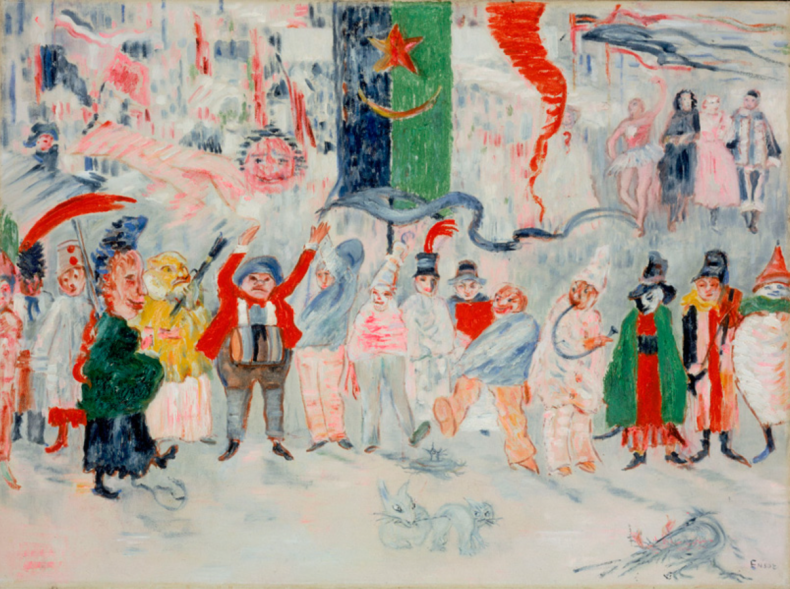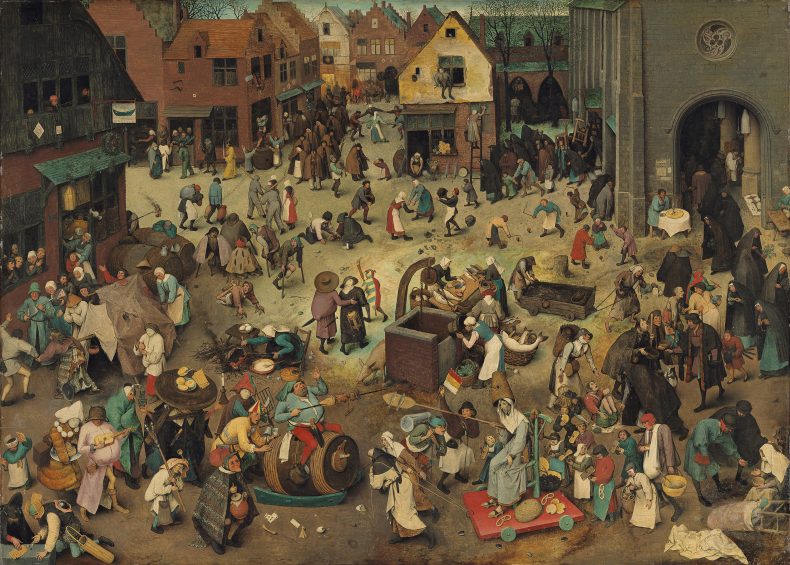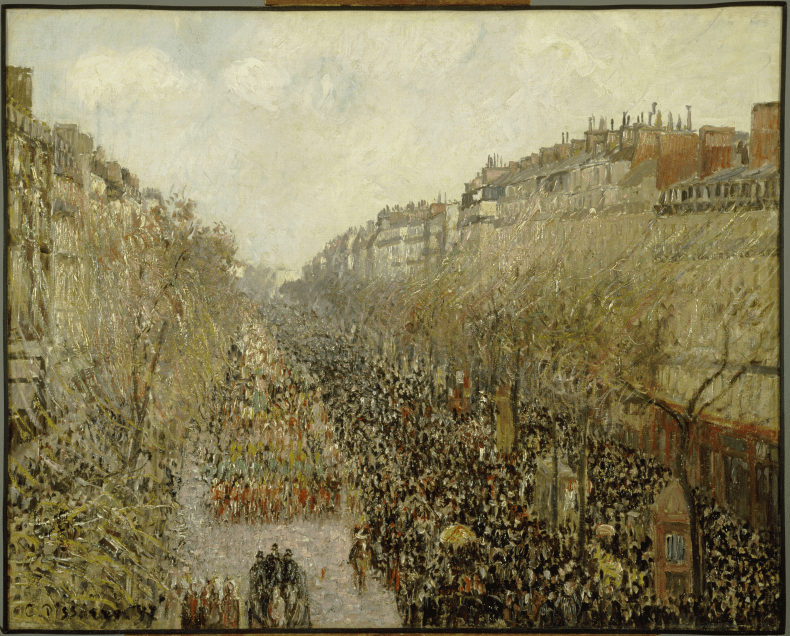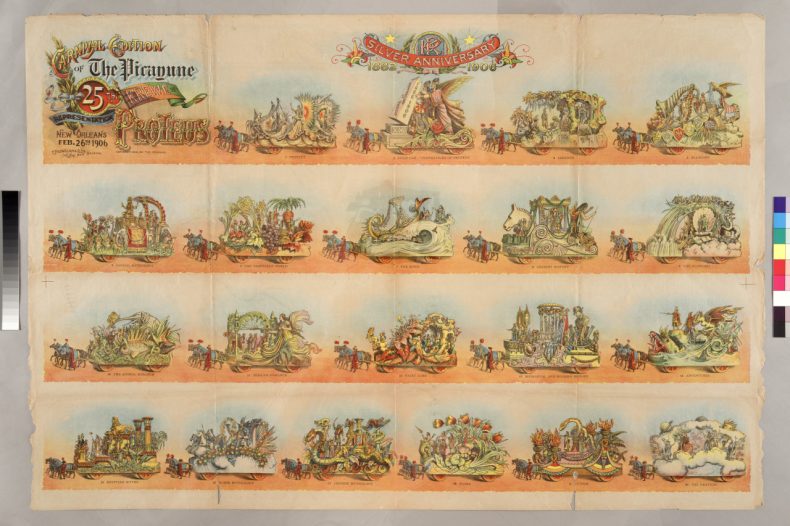 ‘Four things to see’ is sponsored by Bloomberg Connects, the free arts and culture app. Bloomberg Connects lets you access museums, galleries and cultural spaces around the world on demand. Download the app here to access digital guides and explore a variety of content.
‘Four things to see’ is sponsored by Bloomberg Connects, the free arts and culture app. Bloomberg Connects lets you access museums, galleries and cultural spaces around the world on demand. Download the app here to access digital guides and explore a variety of content.
Each week we bring you four of the most interesting objects from the world’s museums, galleries and art institutions, hand-picked to mark significant moments in the calendar.
The festival of Mardi Gras embodies the lavish excesses that come before the sacrifices of Lent. French for ‘Fat Tuesday’, the name refers to the tradition of eating rich and fatty foods before an annual period of contemplative fasting. In some countries it is celebrated in fairly restrained fashion as Pancake Day; in others, the carnival spirit is fully embraced. In Venice, where the festivities were abolished in 1797 under Austrian rule and not revived until 1979, revellers wear ornate costumes and masks, often made of leather or porcelain; millions of people descend on the city to party each year. In Belgium, the historic town of Binche holds a carnival notable for the iconic Gilles, figures who wear wax masks and ostrich feather hats and throw oranges into the crowds. Across the Atlantic, the samba rhythms and enormous floats of Rio de Janeiro are an iconic part of the biggest carnival in the world, and the vibrant culture of Mardi Gras in New Orleans finds exuberant expression in multiple parades across two weeks.
This week we look at four works that capture the kaleidoscopic pleasures of Mardi Gras.

Carnival in Flanders (c. 1929–30), James Ensor. Stedelijk Museum, Amsterdam
Carnival in Flanders (c. 1929–30), James Ensor
Stedelijk Museum, Amsterdam
In this menacing Carnival tableau, ballet dancers, clowns and grotesquely masked figures dance and cheer, whipped up by the winds that send streamers and flags flying. A large pink creature looms behind the festivities while animals fighting bitterly in the foreground add to the unsettling atmosphere. Belgian artist James Ensor was drawn to the anonymity and strangeness of masks, which are common in Carnival and Mardi Gras culture in Belgium and the Netherlands, and which add to the blurry surreality of this scene. Find out more here.

The Fight between Carnival and Lent (1559), Pieter Bruegel II. Kunsthistorisches Museum, Vienna
The Fight between Carnival and Lent (1559), Pieter Bruegel II
Kunsthistorisches Museum, Vienna
In this elaborate portrayal of customs associated with Carnival and Lent, two processions dominate the foreground, with rotund Carnival leading from the left, riding a barrel and wielding a roasting spit, and the lean figure of Lent from the right, raising a baker’s shovel with two fish, symbolic of Christ. Here is the clash between feast and fast, revelry and charity, the tavern and the church. Click here to learn more.

Boulevard Montmartre, Mardi Gras (1897), Camille Pissarro. Hammer Museum, Los Angeles. The Armand Hammer Collection; gift of the Armand Hammer Foundation
Boulevard Montmartre, Mardi Gras (1897), Camille Pissarro
Hammer Museum, Los Angeles
This oil painting of Mardi Gras on one of Paris’s Grand Boulevards was painted in the last decade of Pissarro’s life; it is one of 14 in a series of studies by the artist that depict the street in different seasons and at different times of day. Pissarro captures the bustle and sense of celebration with a crowd from all walks of life and coloured streamers fluttering in the breeze. Click here to find out more on the Bloomberg Connects app.

Proteus 1906 Carnival Bulletin, the Times Picayune (1906), T. Fitzwilliam & Company. The Historic New Orleans Collection
Proteus 1906 Carnival Bulletin, the Times Picayune (1906)
The Historic New Orleans Collection
This traditional bulletin reveals in fine detail the float designs for an upcoming Mardi Gras parade. Festivities in New Orleans are organised by social clubs known as krewes, of which Proteus is one of the oldest. In the run-up to the parades, krewes would publish such bulletins in the local papers, giving everyone a preview of the themes and designs to look forward to. Click here to find out more.
![]() ‘Four things to see’ is sponsored by Bloomberg Connects, the free arts and culture app. Bloomberg Connects lets you access museums, galleries and cultural spaces around the world on demand. Download the app here to access digital guides and explore a variety of content or scan the QR code.
‘Four things to see’ is sponsored by Bloomberg Connects, the free arts and culture app. Bloomberg Connects lets you access museums, galleries and cultural spaces around the world on demand. Download the app here to access digital guides and explore a variety of content or scan the QR code.














![Masterpiece [Re]discovery 2022. Photo: Ben Fisher Photography, courtesy of Masterpiece London](http://zephr.apollo-magazine.com/wp-content/uploads/2022/07/MPL2022_4263.jpg)
‘Like landscape, his objects seem to breathe’: Gordon Baldwin (1932–2025)